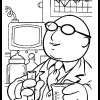Thank you for that explanation, GMO. From what this American knew of quids, i wasn't seeing how that could be that type of unit of measurement.
Was it like the Kessel Run in less than 12 parsecs? 

No QUID (quantitative ingredient declaration) is just a lovely bit of UK and EU legislation which goes back to our fundamental ethos on labelling which is "thou shalt not mislead the consumer..." It's a ball ache in lots of ways but also if you're a consumer and buying, for example, a beef and mushroom pie. You might have three pies in front of you.
Pie 1 - 50% beef, 20% mushrooms. £3.99
Pie 2 - 25% beef, 15% mushrooms. £3.50
Pie 3 - 30% beef, 25% mushrooms £3.25
You could of course go for the cheapest pie and that wouldn't contain a bad amount of beef. You might however, think the most expensive pie is worth the extra 74p. When you look at the quantity of key named ingredients, pie 2 looks like a bad deal, Pie 3 isn't bad but Pie 1 is packed with beef and a decent amount of mushrooms. It might be tight on the gravy but most people are going to not feel ripped off by that.
So basically QUID is there because people do not measure "value" only on price but the proportion of the ingredients which make up the key part of the food and, as a result, can then make an informed decision about what they will and will not spend their money on. Whether consumers do this regularly or not is another matter but retailers get very worried about the % meat content particularly of prepared savoury foods.
What needs a QUID is in the links above but I'd say it's pretty common for two different brands to interpret the rules slightly differently but only really in subtle ways. Where it gets super complex and debatable is when you start draining off items, e.g. cooked out marinades, fat etc.











